Hello, I’m David Hill with New York Habitat. Today we’re going to visit another lively part of Paris in this video tour: Saint-Germain-des-Prés!
This will be the 1st episode of a three-part series dedicated to Saint-Germain-des-Prés. You can watch Part 2 of our Video Tour of Saint-Germain-des-Prés here and Part 3 of our Video Tour of Saint-Germain-des-Prés here.
Paris Video Tour of Saint-Germain-des-Prés – Part 1 (6:17)
The Saint-Germain-des-Prés area stretches just south of the Seine and west of the Latin Quarter, and was once a large monastery and a tiny market town. Its name in French means “Saint Germain in the meadows”, and that was exactly where it was located: outside the walls of the city.
The monastery was founded in 532 by Childebert, the second king of France. It became rich and powerful, but did not survive the Viking raids of the 9th century. The monks then camped in the ruins until 990, when the monastery was rebuilt by King Robert the Pious.
The town between it and the city was a very lively place. Eventually theaters started popping up. By the 17th century, the town boasted the composer Lully’s first opera house, Moliere’s first theatre and the first Comédie Française. It eventually became a well-known literary and artistic center.
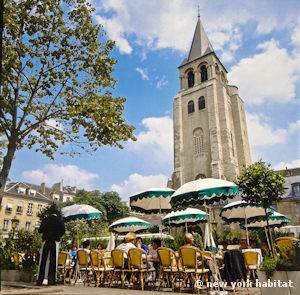 Eglise Saint-Germain-des-Prés (3 place de l’Eglise Saint-Germain-des-Prés)
Eglise Saint-Germain-des-Prés (3 place de l’Eglise Saint-Germain-des-Prés)
With construction starting in approximately 1000 A.D., the Eglise Saint-Germain-des-Prés is the oldest existing church in Paris. Most of it is Romanesque. The rounded arches, small windows and heavy walls of the bell tower are typical of the Romanesque style. During the French Revolution the church was used as a gunpowder warehouse. In the midst of the war 15 tons of gunpowder exploded, blowing a side out of the church, and the monastery along with it; all that remains now is the church and the palace of the abbot.
The Square and the Famous Cafés
The area soon became a center for artists, intellectuals and writers. Already in the 17th century, the village was home to writers like Racine and La Rochefoucault. In the 19th century painters like Delacroix and Manet, and writers like Balzac settled here. Benjamin Franklin and Oscar Wilde lived near the square, as well. In the 1920s, many Americans were attracted by the charm of the neighborhood. Hemingway and his wife lived here, and Henry Miller often found himself in the district. Later, Picasso moved here and this is where he painted Guernica.
Life here still centers on the square in front of the church and on 3 famous cafés nearby. The square is a popular meeting place, often featuring musicians and sculpture displays. There is a small Christmas market and a jazz festival held here each year.
The three cafés on the boulevard, once frequented by artists and intellectuals, are still as popular as ever.
Les Deux Magots (6 place de L’Eglise Saint-Germain-des-Prés)
Les Deux Magots, located at 6 place de l’Eglise Saint-Germain-des-Prés, is named for 2 Chinese figures on the wall inside, left over from when the café was a silk merchant’s shop. When it opened, the café was a favorite of the poets Verlaine and Rimbaud. In the 1930s, Picasso liked to come here. In the late 30s, the café was frequented by the existentialist philosopher Jean Paul Sartre and the writers Camus and Prévert.
Café de Flore (172 Boulevard Saint-Germain)
When the café became a favorite of the Germans occupying Paris, Sartre and his colleagues abandoned it for Café de Flore on the next block, at 172 Boulevard Saint-Germain. The owner gave them the upstairs to sit, drink coffee and write. Sartre wrote his famous treatise Being and Nothingness in this location.
Brasserie Lipp (151 Boulevard St-Germain)
The other famous drinking place is the Brasserie Lipp, across the street at 151 Boulevard Saint-Germain. It was favored by the poets André Gide and Paul Valéry in the 1920s and it was here that Hemingway wrote A Farewell to Arms. It later attracted book editors and is now a haunt of journalists and politicians.
Have a little break at any one of these cafes to hob nob with the Parisian intellectual elite – but beware of their ‘elite’ prices!
Of course, the best way to hob nob with the Parisian intellectual elite is to live like a local and rent a furnished apartment in the heart of this famous neighborhood. New York Habitat offers furnished apartment rentals in Saint-Germain-des-Prés and all over Paris. There is no better way to experience the true flavor of Paris than to live in a Parisian apartment.
Consider this 1-bedroom vacation rental which is located in the heart of the Saint-Germain-des-Prés neighborhood of Paris (PA-3151). Situated on the 2nd floor of an elevator building, this rental features all sorts of the modern amenities such as cable and wireless Internet. The apartment includes one and a half bathrooms, as well as a washing machine!
You might also like this 2-bedroom vacation rental in St. Germain des Prés, Paris (PA-3025) which also features the luxury of a washing machine. The apartment is on the 6th floor of a modernized building. The rental has a cable TV, Internet and, of course, a fully equipped kitchen! You can even enjoy the beautiful balcony where you can take in the views of Paris!
Or there is this Paris furnished studio apartment in Saint Germain des Prés (PA-3966) which is located within walking distance of many cafes and restaurants, including Les Deux Magots. This studio features a lofted sleeping area, creating a larger living room, courtyard views and a fully equipped kitchen.
The Institut de France (23 quai Conti)
Once you’ve had an espresso and a croissant, you’ll be ready to move on to other areas of Saint-Germain-des-Prés. Our final stop in this first episode is the Institut de France.
The Institut de France, at 23 quai Conti, with its distinctive dome was built in the 17th century for Louis XIV’s Prime Minister, Mazarin. It is now the French Institute, the headquarters of the five French academies of arts and sciences. The most famous academy is the Académie Française, whose jurisdiction is the French language. They are always updating a dictionary of permissible French words and expressions – every year a few English words sneak in like ‘surfing’ and ‘chewing-gum’.
I hope you’ve enjoyed the Saint-Germain area, a neighborhood where history and culture meet. There are so many things to see in this area, we couldn’t fit them all in our video tour of Saint Germain, so there are two more episodes to look out for in the future. If you have any fun tips about Saint Germain be sure to leave a comment in the comment section below.
This has been David Hill with New York Habitat. We hope to see you soon, sipping coffee like a local, in the heart of St-Germain-des-Prés.
Continue the visit with Part 2 of our Video Tour of Saint-Germain-des-Prés here and Part 3 of our Video Tour of Saint-Germain-des-Prés here.

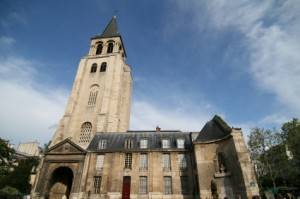
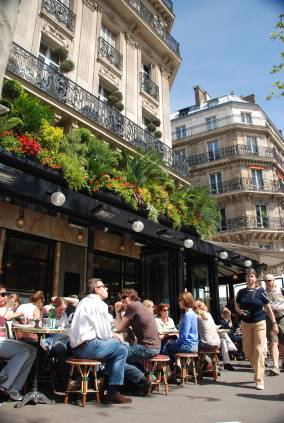
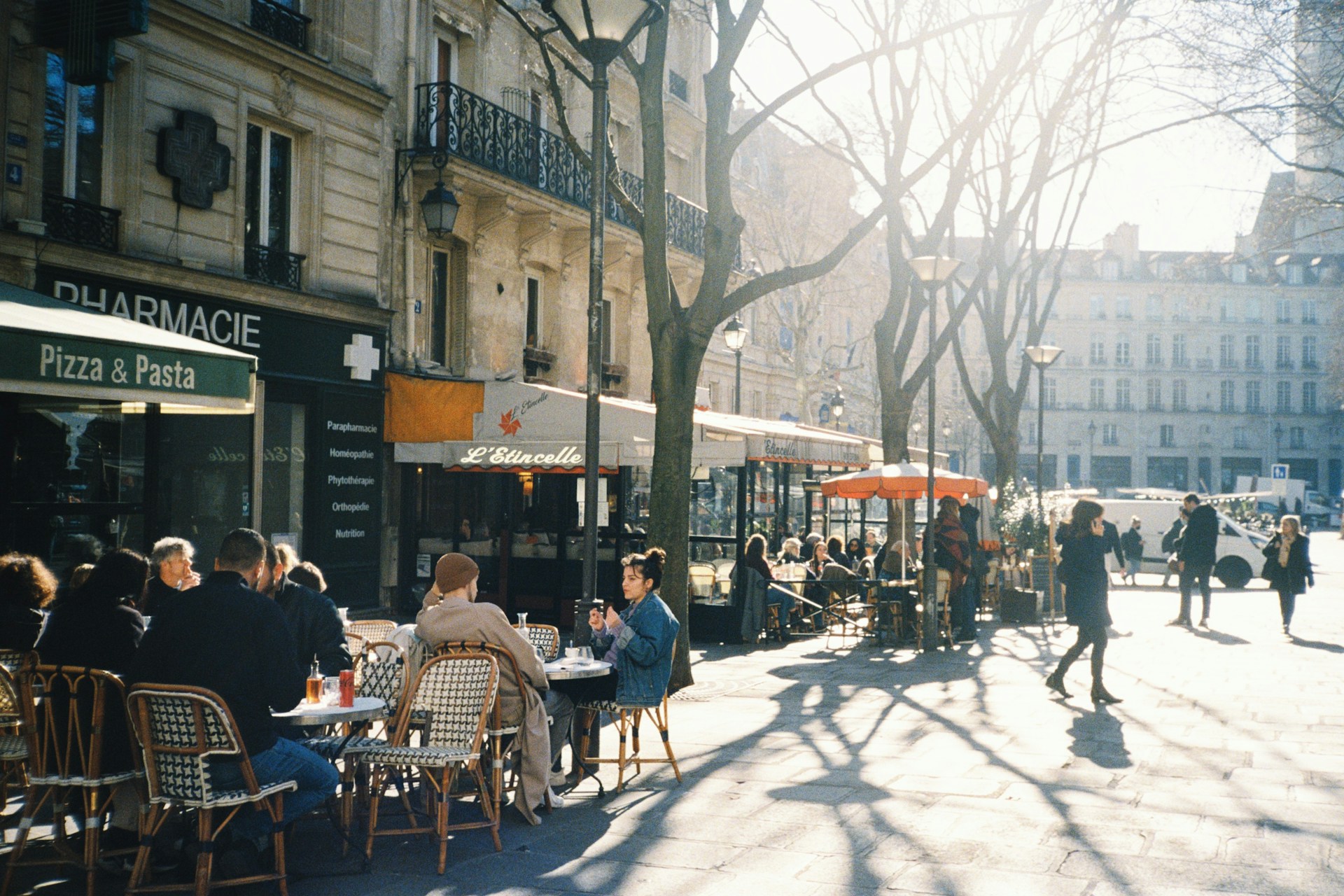
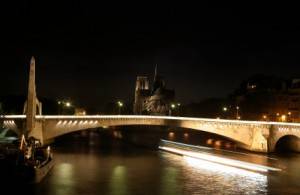
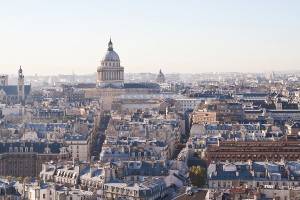
Very impressive and informative. Thanks for the mini-tour.